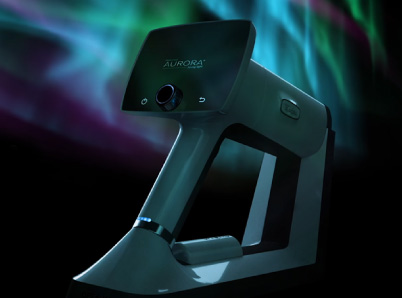The primary care physician (PCP) plays a central role as the first line of defense in the early detection of various diseases, including those of the eye. However, a University of Michigan poll in 2018 found that almost 60% of adults who seek regular checkups said that their doctors hadn’t inquired about their vision.
It’s not a matter of a lack of foresight, commitment, or skill. The traditional tool for detecting eye disease, the direct ophthalmoscope, is overmatched for the pace and volume of today’s primary care practices. As a result, this has created a gap in patient care of the eye. The Centers for Disease Control estimates that 40% of adults who face a high risk of vision loss did not receive an eye exam in the past year.
With the growing prevalence of blinding eye diseases, such as glaucoma, diabetic retinopathy, and age-related macular degeneration, this has become an urgent matter. But thanks to the development of new technological solutions, such as those spurred by Optomed, changes are happening.
Eye Care and the Primary Care Physician
An estimated 2-3% of visits to primary care offices and emergency rooms originate from complaints about vision or other difficulties with the eyes. The most common presentations are concerns such as conjunctivitis or abrasion of the cornea. Yet, primary care and ER doctors are also positioned to help identify the signs of eye disease that can cause partial or total vision loss, such as glaucoma, diabetic retinopathy, and age-related macular degeneration.
But technology can stop primary care and ER doctors from conducting proper eye screenings as often as they could. The direct ophthalmoscope, the primary tool for examining the retina, has several limiting factors, such as a narrow field of view, that makes it impractical for primary care.
One of the biggest drawbacks of the ophthalmoscope is that it requires the patient’s eyes to be dilated. The dilating drops require up to a half hour to take effect. This means the doctor must start the exam, send the patient back to the waiting room, and then have them return later for the eye screening.
As a result, proper eye screenings are not able to be effectively integrated into primary care practice. Many eye diseases can be treated or reversed if caught early, but the professionals best situated to do screenings do not always have the right tools.
The Urgent Need for Earlier Detection
Glaucoma, diabetic retinopathy, age-related macular degeneration, and other serious eye diseases are progressive. They cause small, undetectable changes over time. People often don’t recognize that something is wrong until it’s too late.
The problem is likely to grow in the years to come, even if diabetic retinopathy is only one example. The International Diabetes Foundation estimates that the number of adults between the ages of twenty and seventy-nine with diabetes will grow 50%, to 630 million by the year 2045. Statistics currently show that one-third of people with diabetes will suffer from diabetic retinopathy.
The need for improved early detection of eye disease has never been more pressing. The data shows that proper screenings can make a tremendous difference in helping patients avoid severe vision impairment or blindness.
Changing the Way That You Detect Eye Disease
The development of new technology is enabling advancements in the standards for early eye disease recognition and treatment. Doctors can now use special digital cameras to capture images of the retina. These cameras are easier and more cost-effective to use than the direct ophthalmoscope, creating conditions for earlier identification of eye disease.
Retinal cameras provide significant advantages in the battle against eye disease with their ease of use and portability. They are non-mydriatic in their operation, meaning doctors can get a clear view of the retina without the patients’ pupils having to be dilated. Optomed is leading the way in providing digital retinal camera systems that are poised to reshape how physicians routinely integrate early eye disease detection into their practices.
The company’s Optomed Aurora camera includes a high-contrast optical design that helps detect small early-phase retinal changes. It also has a 50-degree field-of-view combined with non-mydriatic operation, allowing for detailed examination in various use cases. The camera builds in auto-focus and auto-exposure functions to enable doctors to focus on the patient rather than the technology.
Optomed Solutions at the Right Time
The Optomed Aurora and retinal camera technology are providing primary care doctors with a new tool to fill the technological gap in proper eye care. The Aurora is simple, cost-effective, and portable, enabling primary care practices to do more for patients in spotting and addressing the signs of eye disease.
Here at Optomed, our mission is to help save the vision of millions of people. By integrating our software and artificial intelligence solutions with our camera, we enable eye screening for everyone, wherever they are. To see how we can equip you to save the sight of more patients, schedule a free consultation today!
